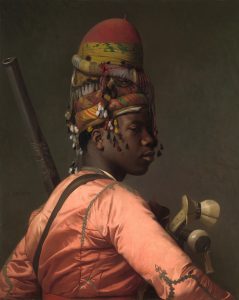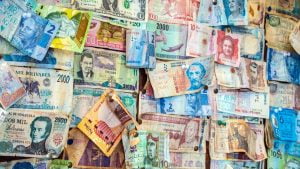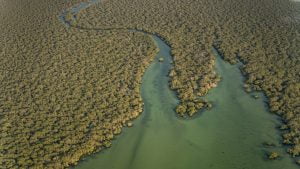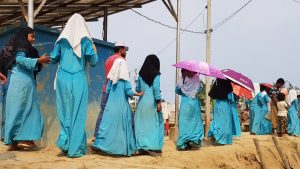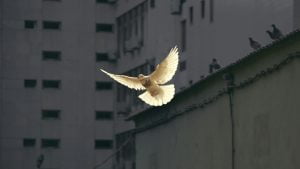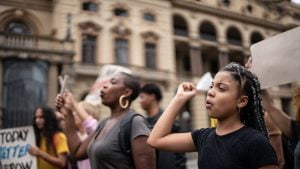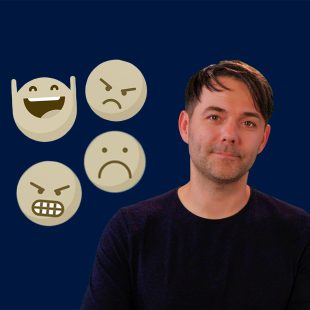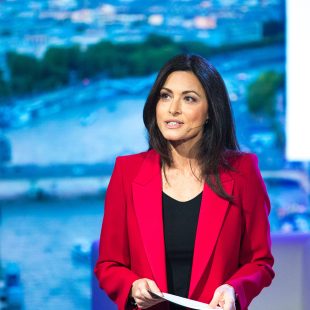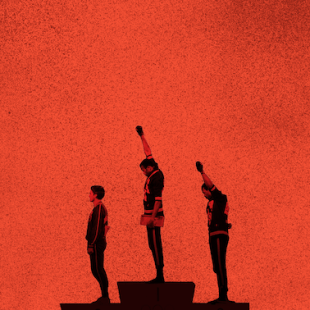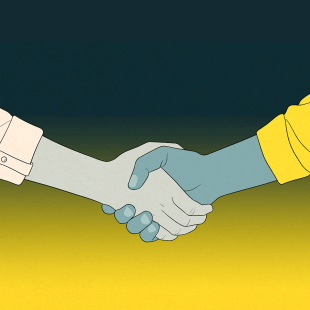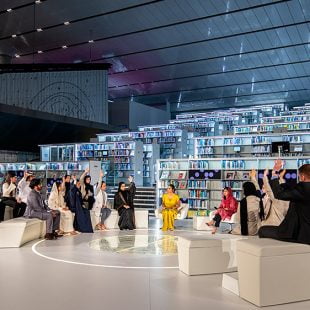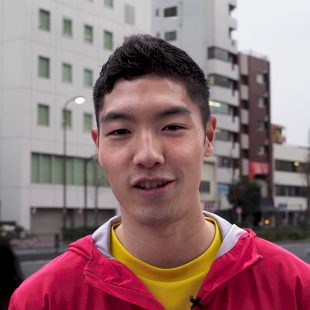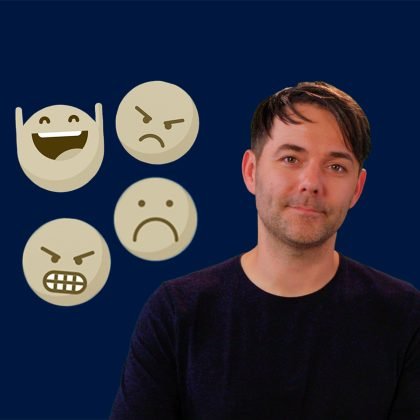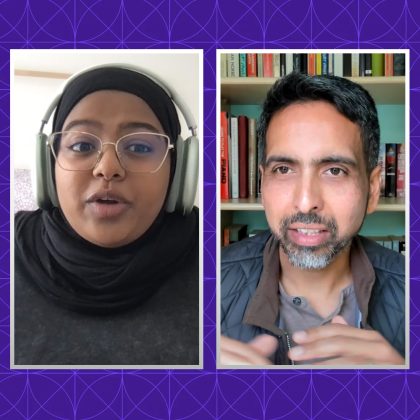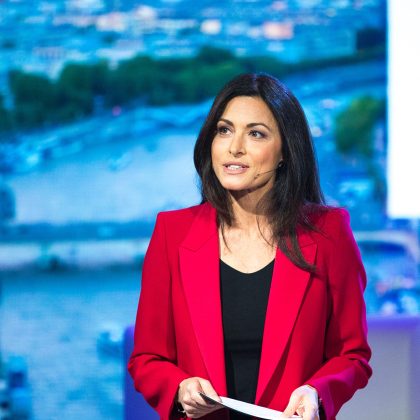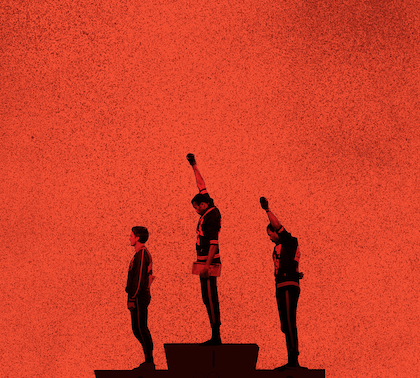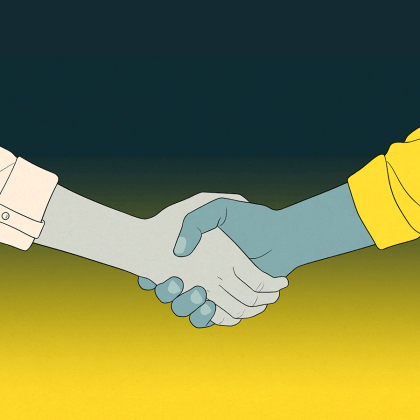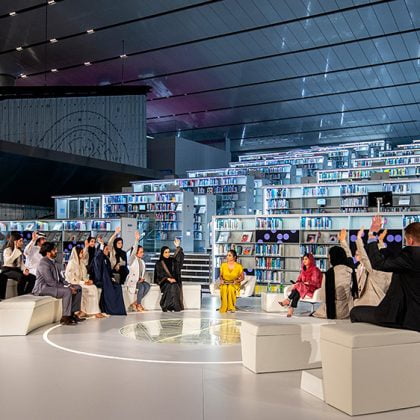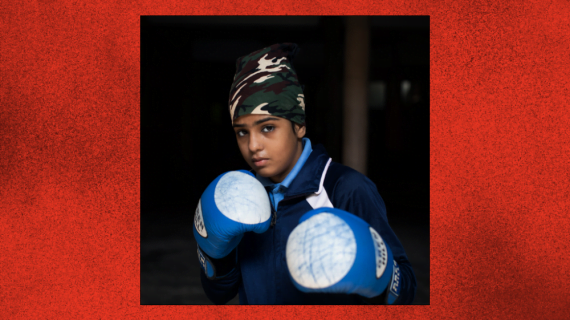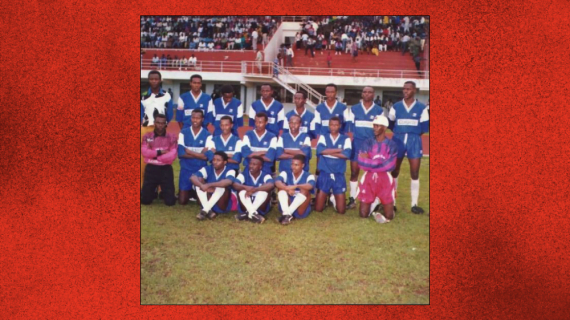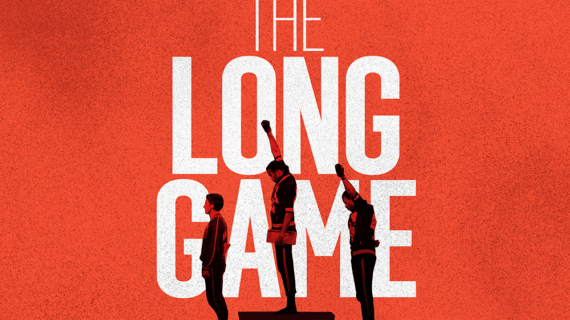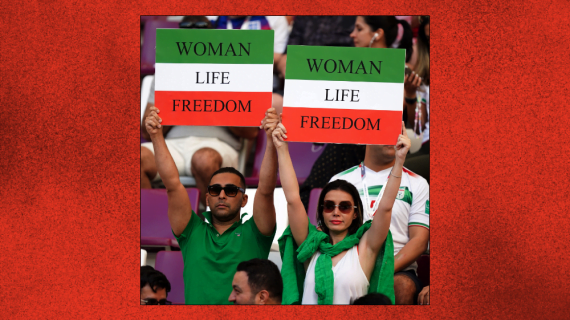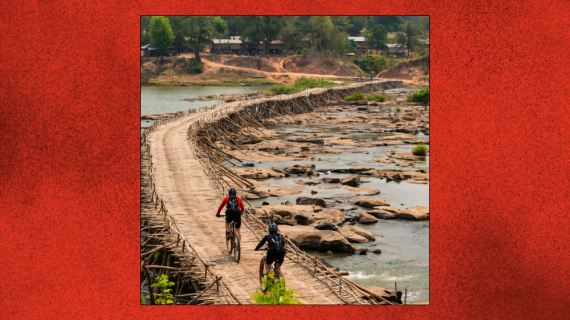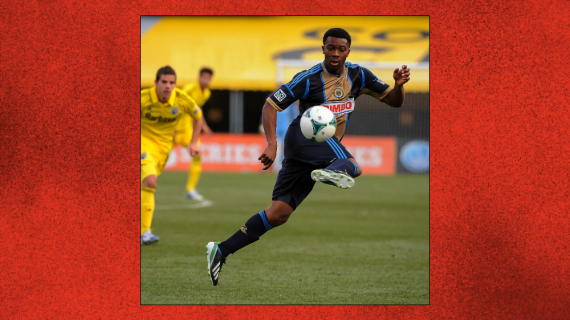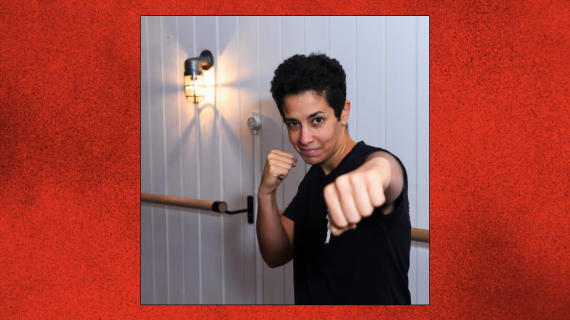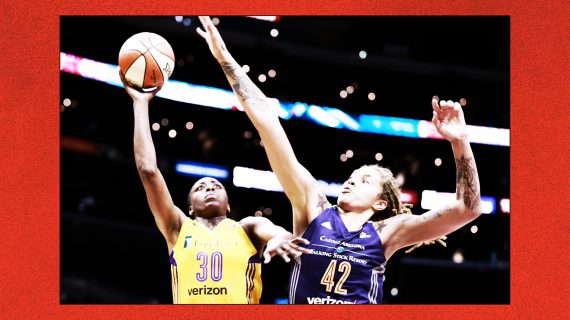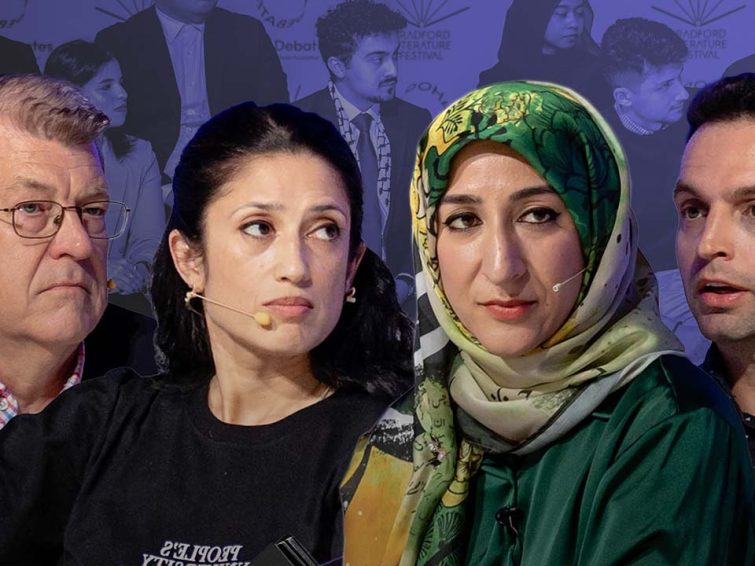World Cup 2022: Can mega-event activism actually lead to lasting change?
There’s an upside to hosting a mega-sized sporting event: Governments plan new roads and train stations and airports. Corporate sponsors and foreign investors pile on. And when you build it, people come—people who may not have visited before. Often, these mega-sized sporting events also bring with them a spotlight on problems that plague the host nation. For the 2022 Qatar World Cup, that spotlight increased the international scrutiny of the treatment of migrant workers. But how effective is this mega-event activism? And what happens when the circus leaves town and the spotlight goes dark? Reporter Ken Shulman looks at case studies in South Africa, Brazil and Qatar to learn more.
Doha Debates is a production of Qatar Foundation, which is a state-led nonprofit organization in Qatar.
S1 E3: World Cup 2022: Can mega-event activism actually lead to lasting change?
Note: We encourage you to listen to the audio if you are able, as it includes emotion not captured by the transcript. Please check the corresponding audio before using any quotes.
NEWSCLIP WITH MAN SPEAKING:
Please rise for the national anthem of Norway.
[SOUND OF “JA, VI ELSKER DETTE LANDET” PLAYING]
IBTIHAJ MUHAMMAD, HOST:
Last March, ahead of their World Cup qualifying match, the Norwegian men’s national soccer team removed their warm up jackets to reveal white shirts with black letters that read “HUMAN RIGHTS: On and off the pitch.” Players from Germany, Netherlands, and Denmark would later stage similar protests against Qatar, host of the 2022 World Cup. At issue was the treatment of migrant workers.
MAN #1:
It’s a life of perpetual toil, really, in pretty harsh conditions for very little pay.
MAN #2:
We’ve seen that the World Cup has added a level of scrutiny, has really shone the spotlight on Qatar. And that scrutiny has accelerated a lot of the changes that were anticipated — already anticipated as part of the reforms.
IBTIHAJ: From Foreign Policy and Doha Debates, this is The Long Game, a podcast about the power of sports to change the world. I’m your host, Ibtihaj Muhammad.
There’s an upside to hosting a mega-sized sporting event. Governments plan new roads and train stations and airports. And when you build it, people come — different people, new people who may not have visited before. Often, these mega-sized sporting events bring with them a spotlight.
NEWSCLIP WITH AMERICAN MAN SPEAKING:
Next month, more than three and a half million soccer fans are expected to head to Rio de Janeiro, Brazil, for the World Cup. But there are some serious questions about whether Rio is ready to play host.
WOMAN:
No, we actually think nothing of the World Cup, because we are living in poverty!…
NEWSCLIP WITH DIFFERENT AMERICAN MAN SPEAKING:
During the World Cup final this July in Moscow, Verzilov ran onto the field in a police uniform, protesting against police brutality in Russia.
IBTIHAJ: But how effective is this mega-event activism? And what happens when the circus leaves town and the spotlight goes dark? Reporter Ken Shulman looks at three case studies: South Africa, Brazil and, of course, Qatar. Here’s Ken.
[SOUND OF CONSTRUCTION]
KEN SHULMAN:
In early 2011, I traveled to Qatar. Doha, the stunning capital city, was humming, a ring of designer skyscrapers framing a bustling network of construction sites below. This Gulf emirate, a teardrop-shaped country about the size of Connecticut, had just been awarded the 2022 World Cup, and Qataris were excited. They were the first Arab nation to host the competition.
As part of their World Cup bid, Qatar had promised to build seven brand new stadiums. Now that required labor, and in a country with just over 300,000 citizens, that meant migrant labor. Back then, you’d find those laborers on the Corniche, Doha’s scenic waterfront promenade. Indians, Pakistanis, migrants from the Philippines, homesick workers who lived in labor camps and who, on their rare days off, came down to fish or smoke or play guitar.
[SOUND OF MAN PLAYING GUITAR AND SINGING “HOTEL CALIFORNIA”]
KEN: Now, migrant labor was nothing new to Qatar or to the Gulf. Foreign workers built Doha’s spectacular skyline. They built capitals and factories and highways in Bahrain, Kuwait, the UAE and Saudi Arabia. And, in general, they were treated badly.
MAN: We are often talking about abuses that equate to, or come close to, slavery. Now that’s not to say these abuses don’t happen elsewhere, but I think there is — they are particularly severe in the Gulf.
KEN: That’s Nick McGeehan. He’s co-director of FairSquare Research and Projects. It’s a London-based NGO. Nick has spent lots of time in Qatar and the Gulf. He’s an expert on migrant worker issues around the world. Migrants, he says, struggle wherever they land. But the situation in the Gulf is unique.
NICK MCGEEHAN: Migrants are typically a small portion of the population in most countries. In the Gulf, it’s about 80 to 90%. So the overwhelming majority of the population is in this situation.
KEN: That situation is the result of a system called kafala. It’s the system most Gulf countries use to regulate migrant labor. Under kafala, a migrant worker needs an in-country sponsor, and that in-country sponsor pretty much controls the migrant’s life. The migrant worker can’t change jobs or leave the country without the sponsor’s permission. It’s essentially an open invitation to abuse.
Thanks to the World Cup, Qatar has been in the crosshairs of the international human rights community, and that scrutiny has helped drive reform. Three and a half years ago, in 2017, Qatar invited the International Labor Organization to Doha to help overhaul the kafala system. Today, migrants in Qatar no longer need permission to change jobs or leave the country. Max Tuñón heads the ILO project office in Doha.
MAX TUÑÓN: Dismantling these two key elements is really at the cornerstone of the, the labor reform agenda here in Qatar. The greater labor mobility that has been introduced since the kafala reforms have led now to more than 220,000 workers changing employers in a year. That’s over 10% of the workforce.
KEN: And Qatar, with help from partners like the ILO, has taken further steps to make labor contracts more transparent to institute a minimum and livable wage. It’s a good start, says Tuñón, but the work’s far from over.
MAX: So there are still issues to address, but when we think about the trajectory over time — how far things have come in the past three and a half, four years — it’s certainly a positive story.
KEN: So it looks like Qatar — lit up at least in part by the World Cup spotlight — has taken some bold steps. But how far will those reforms go? And what happens when the circus leaves town, taking the spotlight with it? A look at World Cups past might shed some light here, starting with South Africa, which hosted the tournament in 2010.
MAN:
Well, I’m a third-generation descendant of indentured labor who arrived here in South Africa since 1860.
KEN: Brij Maharaj is a geographer at the University of KwaZulu-Natal. That’s in Durban, a major South African port and a host city for the 2010 World Cup. His grandfather came to South Africa from India as an indentured worker. Indenture was just a step above slavery — a small step. Impoverished or indebted men signed binding contracts and boarded ships for far-flung European colonies. Over 200,000 Indians came to the Durban area to work on sugar plantations. After a term of five or 10 years, they were free.
BRIJ MAHARAJ: And once they completed their indentured period, they began to engage in what is popularly known as market gardening. So around 1900, the vegetable and fruit needs of the Durban area was being provided by indentured laborers and their descendants.
KEN: These former servants sold their carrots and beetroots at a squatter’s market near Durban’s Warwick Junction. It was called the Early Morning Market. By the 1950s, there were hundreds of stalls there. Indian and African traders sold in bulk and fed a broader network of satellite markets, where locals bought their fruits and vegetables, spices, flowers, live poultry and even traditional medicines. Maharaj and his brother worked at the Early Morning Market when they were in high school in the 70s. On weekends and holidays, from before dawn to after dark, they lugged crates, swept floors, bargained with customers and kept track of cash. It was a melting pot of cultures and a very lively scene.
BRIJ: It’s a hive of activity and it’s a very busy place. And the people who came there were poor people, because, you know, if you bought from a greengrocer, et cetera, you’re going to be paying more.
NEWSCLIP WITH SOUTH AFRICAN MAN SPEAKING:
The 2010 FIFA World Cup will be organized in South Africa.
[SOUND OF CROWD CHEERING]
KEN: Many South Africans, most South Africans, jumped for joy in 2004, when FIFA announced that their country would host the World Cup. It meant South Africa was back in the international fold after decades spent as a pariah during apartheid. And there was the promise of World Cup riches: airports, train hubs, sparkling urban centers, and most of all, jobs — badly needed jobs in a country with one of the world’s highest levels of inequality and unemployment. There were a few South Africans, including Maharaj, who weren’t completely sold on the idea, but most of them kept quiet. Support for Africa’s first World Cup was an act of patriotism, a vote of confidence in the ruling ANC party, which had overthrown the racist apartheid regime. That patriotism didn’t last long.
BRIJ: I think after the hosting of FIFA 2010, the government privately conceded that they — to put it crudely — were taken for a big ride by FIFA. We have more people living in shacks or informal settlements. There are more people without services like water, electricity and sanitation. And, you know, unemployment rates are high. So regardless of the indicator that we use, 10 years after FIFA, the plight of the poor is — they are worse off.
KEN: It might seem that neither the World Cup nor the very limited activism around it had any lasting effect on South Africa — at least for the country’s poor. But that’s not entirely true. There was at least one successful protest, and Maharaj had a hand in it.
Durban already had a soccer stadium when South Africa won its World Cup bid. But city leaders decided to build a new one. It’s an architectural marvel, with a signature arch and a cable car that — when it’s not broken — offers stunning views of the city and the Indian Ocean. But the stadium is — if such a thing exists in Africa — a white elephant: dramatically underused and a constant cash drain for the city. Now, that’s nothing new for World Cup or Olympic stadiums. Lots of planners overreach and overspend. And in Durban, that reach extended beyond the stadium — five kilometers south, to be exact, to the Early Morning Market.
BRIJ: FIFA didn’t ask for the market to be removed. The city authorities were using FIFA as an excuse to clean up the inner city, and cleaning up the inner city means pushing poor people out, because poor people are an embarrassment to the city authorities. So they came up with this idea of a mall.
KEN: A brand new shopping mall to complement the brand new stadium. It’s not a bad idea, but a mall for whom? The locals could never afford to shop there. Maharaj concedes that the Early Morning Market and the surrounding area did need a facelift. Many spots were dirty, poorly lit, even dangerous. But it was a heritage site, and a busy one. Nearly half a million commuters came through each day by bus, train or on foot. Traders there did close to $140 million of business every year. Most of all, people who lived nearby could afford to shop there.
BRIJ: So it was a thriving economic hub for poor people. To build a mall in such an area was seen to be irrational, illogical. Most cities in the world actually promote these types of markets, because they have a popular appeal, they attract tourists, et cetera.
KEN: Maharaj was no stranger to protest. As a student and as an academic, he spoke out frequently against apartheid. That activism got him noticed. His phone was tapped, and government security police tried to intimidate him on the street. But when the apartheid regime finally disappeared in 1994, South Africa’s appetite for protests seemed to vanish as well. The battle was won. Everyone got behind the new government, and getting behind the government also meant supporting the World Cup.
One morning, as Durban and the rest of the country were ramping up for soccer’s greatest show on Earth, Maharaj found a letter printed in his morning newspaper, a letter about the Early Morning Market.
BRIJ: To be honest, it’s the first time I became aware of the problem. So I went to a meeting. I didn’t even carry a pen, you know. I listened to the challenges. And I said, “Yes, I can get involved.” And there were other academics as well.
KEN: Maharaj and his colleagues helped organize protest marches. They printed signs and banners, did radio and television interviews. It felt just like old times: A broad, diverse coalition. Traders, lawyers, porters, academics of all colors and stripes, all coming together to fight injustice. Except this time, the enemy wasn’t apartheid. It was the ruling ANC party, the one that defeated apartheid. That felt a little weird.
The fight got ugly. During one demonstration, police fired tear gas and rubber bullets at traders. City officials even called the protesters racist, tried to paint them as a bunch of Indians trying to deprive Africans of the opportunities and benefits a mall would bring.
BRIJ: Then they argued that Indian traders were exploiting Africans in the market, and that some of the meetings where the city was trying to sell this project, you had chants of “Hamba ekhaya eMumbai.” That’s Zulu. And if you translate it into English, it means, “Go home, go to Mumbai.” And these chants were coming from what we called “rent-a-mob” groups, who were not linked in any way to the market, but were brought there by the ANC to almost intimidate the traders.
KEN: For the leaders of a country still recovering from decades of racial strife, it was a dangerous move.
BRIJ: To make baseless accusation about race in South Africa is to throw a metaphorical hand grenade into a crowd.
IBTIHAJ: You’re listening to The Long Game, from Foreign Policy and Doha Debates. I’m your host, Ibtihaj Muhammad.
[SYNTHESIZER MUSIC]
IBTIHAJ: And now back to reporter Ken Shulman and our story about World Cup activism.
KEN: The traders and their lawyers turned to the courts, where they obtained a series of stays, or interdicts, against the city and the mall developers. It was a stall tactic. The traders didn’t need to win their case. They just needed to run out the clock.
BRIJ: The city was very much on the back foot, because they had very clear deadlines. And as the interdicts prevented the traders from being displaced, the city itself realized that they may not be able to meet the deadline.
KEN: And run out the clock they did. Eventually, the city and the developers caved. The mall was scuttled, and the Early Morning Market was saved. Many of the people who shop at Durban’s Early Morning Market, and many of the people who work there, live in what urban planners and politicians call informal settlements. These are city neighborhoods that spring up spontaneously, outside of government plans or regulations. About a third of the urban world lives in informal settlements, in places that are often called shantytowns or slums. In Brazil, these informal settlements are called favelas. And the Brazilian city with the highest percentage of favelas is Rio de Janeiro.
WOMAN:
People need shelter. And so they squat.
KEN: That’s Theresa Williamson. She’s an urban planner. She lives in Rio, where she runs Catalytic Communities. It’s an NGO that advocates for people who live in Rio’s favelas. She says favelas may start out as slums…
THERESA WILLIAMSON: …but over time they actually consolidate and develop, and residents improve their homes. And so most of the favelas in Rio are no longer characterized by the conditions that you would attribute to squatter communities, slums, or shantytowns.
KEN: For about four years, Brazil was the epicenter of world sport. In 2014, the country hosted the World Cup. Two years later, Rio staged the Summer Olympics. The one-two sporting punch created an opening for Rio’s leaders to tackle many of the city’s longstanding problems: congestion, pollution, poverty. And that meant sprucing up the favelas. In the beginning, everyone loved the idea.
THERESA: Because we had been in a stagnant economy for three decades in Rio, and there was money going to come in, and the assumption was it was going to be helpful. The city government said, “We’re going to upgrade all the favelas by 2020. We’re going to plant 24 million trees to offset the carbon from the Games. We’re going to clean the Guanabara Bay and the pollution and the sewage.” And all of those things were things that would have benefited the population. But then those aren’t the things that transpired, and very quickly, we were hearing cases of eviction.
KEN: Evictions. Instead of upgrading the favelas, Williamson saw that the government was trying to erase them — at least erase their character, homogenize them, turn them into something that might appeal to high-end tourists. She says she has nothing against high-end tourists, but she is critical of local governments who don’t value the very assets that define their cities and their culture.
THERESA: Every single cultural manifestation you associate with Rio was either born in, developed in or maintained in the city’s favelas. Carnival, samba, passinho, Brazilian funk music nowadays, right? Capoeira. Yet, these communities are chronically, you know, shunted to the side. Why? Because people who live there are low income. They don’t have a lot of money to spend.
KEN: Now, let’s be clear. Many of Rio’s favelas needed cleaning up. There was substandard sanitation, crumbling streets, spotty electric and internet service, and there were gangs and drug dealers — not everywhere, but enough to make it a real problem. But there were also families, working people, students, whole communities caught completely off guard.
THERESA: And the government would show up with eviction notices and, literally, a bus to put your stuff in. And people didn’t know they could fight back.
KEN: But they soon learned how. Residents started sharing stories and strategies, from one favela to another. Sometimes they worked. Sometimes they didn’t. And sometimes it was hard to tell, like in the favela called Vila Autódromo.
THERESA: Vila Autódromo was next to the city’s racetrack. It was actually named after the racetrack, because residents there moved there to build the racetrack. And when the Olympics were announced, they decided they were going to remove the racetrack and build the main Olympic site on that location. So this little favela of 700 homes was right next to what would become the main Olympic site.
KEN: There weren’t any gangs or militias in Vila Autódromo. No drug traffic. Young people there tended to go to university. Most people moved there by choice, and they didn’t want to leave. Many of them stepped up to lead the resistance. A local school teacher, a local mother.
THERESA: And there was Altair, who was the president of the residents’ association, who — it was his third eviction. He had been evicted as a teenager from a favela in the south zone of Rio. He had been evicted as an adult from a part of City of God that was removed for a road. And then he was evicted again from Vila Autódromo. So he brought to the struggle this sense of, “Not again, never again.”
KEN: The battle against eviction unfolded in the courts and on the streets. The international press played a critical role.
NEWSCLIP WITH AMERICAN WOMAN SPEAKING:
And preparations for the soccer World Cup in Brazil is meaning evictions for several Brazilian residents…
KEN: Evictions happen all the time in Rio, but the international press had rarely covered them. This time was different.
THERESA: If these evictions were not linked to the World Cup and Olympics, the international press wouldn’t have been there.
KEN: On the ground, resistance grew increasingly creative and bold. Residents barricaded streets or formed human chains when police showed up. One local photographer shot a series of portraits of residents who’d received eviction orders.
THERESA: And he plastered them — wheat-pasted them, huge, on the sides of the homes, so that if the tractors came, they would be demolishing right into the sides of these houses with these huge faces of the people who lived there.
KEN: The government didn’t just use tractors and police pressure. There was also a soft sell, an effort — legitimate, from their perspective — to purchase the homes in Vila Autódromo. They tried it with a local leader named Dona Penha — a quiet woman, a devout Catholic — who stepped forward as a leader after a previous group of leaders had been evicted.
THERESA: So Dona Penha would say, “Nem todos tem preço,” and that means, “Not everyone has a price.” Her home, to her, was priceless. She had married her husband in their garage. She had raised her daughter. She had space for her mother and her child to — everyone have space as they got older. She had trees. And, you know, she didn’t see a price tag on there, so it didn’t matter what the city offered. There is simply no price. That slogan really reflected not only Dona Pena but the community at large. It was plastered all over the walls with, you know, graffiti, and it came to symbolize Vila Autódromo, because it messed with a lot of people’s world views. The idea that the government might be offering market rate there — one or two million reals — and she’s not even having a conversation about it, because that’s not what her home is to her. It’s not a speculative good. It’s her home.
KEN: If you visit Vila Autódromo today, you’ll find 20 small white houses. These are the houses that the government built for the 20 families who resisted until the end and who were allowed to stay. Twenty families out of 700. The original houses were destroyed. And during your visit, you’ll find the Evictions Museum, which Dona Penha helped create.
THERESA: They’ll take you around to the church, which is the, the original building that’s still there. They’ll walk you around where they have signs where things were before. Nothing was done with the site. This is really important. One little edge of it became an access road. A little park became parking. But the vast majority of the space was left as gravel and grass. So there was no need to evict people.
KEN: “Nem todos tem preço.” Not everyone has a price. It’s hard to quantify the economic and social impact of events like the World Cup. It’s even harder to chart the ethics. Opponents argue it’s obscene for a country like Brazil to spend $3.6 billion on stadiums when so many people lack basic services. And it is a big sum. But the government spent 100 times that sum on health care and education over the same period. And yes, the evictions from Rio’s favelas and from places like Durban’s Early Morning Market were definitely accelerated by the World Cup. But the World Cup didn’t invent gentrification or inequality or graft. And some of the attention these events draw — however unwelcome by organizers — may even help to shift the social justice needle just a little closer to true north. As it appears to have done in Qatar, when Qatar in 2020 abolished the kafala system and overhauled its labor laws. But how much influence did the World Cup actually have? Max Tuñón, the International Labor Organization project director, says labor reforms were already well underway in Qatar.
MAX: Certainly the World Cup was a major factor that accelerated the reforms, but it’s not only about the World Cup. The changes that have been introduced in the past few years are also very much aligned with the national vision of the country, the national development strategy.
KEN: Tuñón says the labor reforms are just one element in a larger plan to diversify and modernize Qatar’s economy.
MAX: That development strategy talks about the establishment of a more competitive economy, a more knowledge-based economy, a more diversified economy. And these labor reforms very much contribute to those goals as well.
KEN: For labor activist Nick McGeehan, Qatar’s labor reforms had less to do with the World Cup than with Qatar looking for help navigating a regional quagmire.
NICK: I would say the more likely explanation for that is that Qatar was under a lot of pressure, due to the aggression of its neighbors in Saudi Arabia and the United Arab Emirates. Qatar needed allies, it needed Western allies, it needed to put up a good face in order to protect itself from the aggression of the Saudis and the Emiratis. And looking good on labor rights was one of the ways they’ve done that,
KEN: And Qatar is quite different from Brazil and South Africa. It can afford to spend tens of billions on a World Cup. Its citizens — that 15% of the population — enjoy free education, free health care, job guarantees, even free electricity.
NICK: Whether or not they are all fully supportive of having the World Cup, the concerns that they would raise, they would raise internally. They’re not protesting on the streets about this. The ones who are grabbing headlines are the reports of Human Rights Watch, are the reports of Amnesty International, are reports of international trade unions. It has been that sort of professionalized activism — if you want to call it that — that has driven press coverage and driven critical press coverage and, to an extent, driven a reform process.
KEN: There’s yet another distinction between the cases, and it’s in the nature of the problem.
NICK: That’s one of the interesting things working on this, is it’s fixable. It’s not one of these intractable problems that you’re never going to solve. These countries have got all the money in the world to fix this problem if they want to. So people are going to work on it. But what will disappear, I think, is the, the attention of editors, the attention of journalists, the attention of the types of people who can take the spotlight and turn it on Qatar in a way that’s really effective. We lose that.
KEN: If there’s a conclusion to be drawn, it’s that whatever outside pressure may be brought to bear, real change needs to be driven from within.
NICK: I think — and this doesn’t just apply to Qatar — but I think the solution to this problem doesn’t lie in the West, doesn’t lie in Western NGOs, writing reports that appeal to Western audiences. It lies in two places: one in the states that send workers to the Gulf, ensuring that they are more assertive in calling for the rights of their nationals. And the second one, and perhaps the more interesting one, is Gulf nationals themselves, who often get overlooked in this debate. They’re often absent from this debate. But you spend time in Qatar or Kuwait, and you’ll find lots of Gulf nationals who are engaged in this issue and who want to improve the way that migrants are treated in their country.
IBTIHAJ: That’s it for this episode of The Long Game. I’m your host, Ibtihaj Muhammad. The Long Game is a co-production of Foreign Policy and Doha Debates. This episode was produced by Ken Shulman and Karen Given, with help from Dan Ephron, Rob Sachs, Japhet Weeks, Amjad Atallah and Jigar Mehta. Make sure to follow us on Apple or your favorite podcast app, and please leave us a review. To learn more, subscribe to Foreign Policy, a global magazine of news and ideas, or visit Doha Debates, a production of Qatar Foundation.
Next week on the podcast: Batouly Camara is one of the first Muslim women to play professional basketball in hijab.
BATOULY CAMARA:
In that moment, I never felt more like myself, to finally have the opportunity where there was no switch happening, there was no, you know, unveiling happening. It was just me, and I felt so much like myself. And I wouldn’t trade that first moment for anything, because it really rooted me in the decision that I made, and the woman that I wanted to be and the life that I wanted to live.
IBTIHAJ: That’s next time, on The Long Game.
Our other podcasts
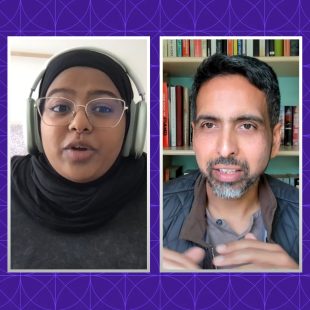
Doha Debates Podcast
Doha Debates Podcast brings together people with starkly different opinions for an in-depth, human conversation that tries to find common ground.

Lana
A podcast in Arabic for today’s generation to discuss their outlook on the world, hosted by Rawaa Augé.

